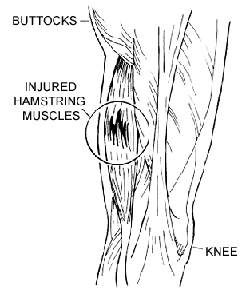 The argument that Phil Hughes’ body wasn’t ready for the Big Leagues is just an excuse to dump on the Yankees. Sure, adrenaline probably caused him to overstride last night in an effort to keep that no htiter alive. We would have been better off with a hit earlier in the game.
The argument that Phil Hughes’ body wasn’t ready for the Big Leagues is just an excuse to dump on the Yankees. Sure, adrenaline probably caused him to overstride last night in an effort to keep that no htiter alive. We would have been better off with a hit earlier in the game.
But come on. Phil Hughes is a 20-year-old in great athletic shape. Are you telling me that Mike Mussina isn’t conditioned enough for the Big Leagues? That Hideki Matsui should log some AAA innings until his hamstrings are stronger? That Chien-Ming Wang should be demoted to work on his leg strength? Give me a break.
I believe that those of you promoting this theory are just looking for ways to dump on Brian Cashman and Joe Torre. Sure, they don’t always make the right moves, but this reeks of picking and choosing evidence to fit your theory. And frankly, those making this argument sound like Cubs fans or pre-2004 Red Sox fans. This was a fluke injury brought about by an over-eager pitcher. It has nothing to do with time spent or not spent at AAA. (I do feel that the Yanks should look at better stretching and muscle strengthening programs. Team yoga is sounding like a better idea with each passing day.)
While Peter Abraham tried to make that exact argument earlier today, he notes that Hughes has a Grade II hamstring strain. So what exactly is a Grade II hamstring strain? Luckily, the Google is a great source of information and pointed me to Eaton Orthopaedics. They note:
A Grade II hamstring pull is usually associated with a loud audible pop. With a Grade II pull, the muscle actually pulls away from the tendon. More bruising is seen in the back of the thigh. The athlete has a decreased range of motion for the hip and the knee. This is a more severe injury, and the time back to sports is between 4 to 6 weeks.
A Grade III hamstring pull is the most severe type of hamstring pull. In this condition the muscle completely pulls away from the tendon. The athlete will usually feel a large lump in the back of his thigh. This is associated with a significant amount of pain and swelling immediately after the injury. Time back to sports for a Grade III injury is usually 6 to 12 weeks.
Since Hughes walked off on his own power and noted last night in the postgame interviews that he wasn’t in pain, I am going to say he has a Grade II strain. While 4 to 6 weeks seems optimistic, I’m hoping Hughes can come back by the end of June.
And therein lies the rub.
Right now, Phil Hughes, 20, was on pace for about 200 innings this year not counting the playoffs. While forced time off due to an injury is never good, Phil Hughes will now see his innings pitched hit a fine mark for a kid turning 21 this year. In fact, Hughes may throw fewer innings this year than last. If, as we believe, he makes about 25 starts this year instead of 33, he’ll reach about 150 innings. Add on another handful for the playoffs, and he’s around 160-180, depending upon how deep the Yankees go.
So Hughes’ hamstring slows down the Yankees’ aggressive timetable for his arm. And his arm wasn’t injured either.
So we can bemoan the short-term loss of Hughes, and personally, I am annoyed because I would have seen him at the Stadium on Sunday. But in the medium- and long-term outlooks, there are plenty of reasons for optimism. This isn’t the end of the Yankee season. It’s just a hiccup.
Leave a Reply
You must be logged in to post a comment.